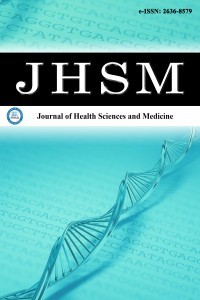1.
Türkiye Halk Sağlığı Kurumu/Türkiye Diyabet Programı 2015-2020. 2020.Accessed July 23, https://www.diyabetimben.com/turkiye-diyabet-programi-2015-2020/
2.
Türkiye Endokrinoloji ve Metabolizma Derneği. Diabetes mellitusve komplikasyonlarının tanı, tedavi ve izlem kılavuzu; 2022.Accessed July 23, https://file.temd.org.tr/Uploads/publications/guides/documents/diabetes-mellitus_2022.pdf
3.
Istenes I, Keresztes K, Hermányi Z, et al. Relationship betweenautonomic neuropathy and hypertension--are we underestimatingthe problem?. Diabet Med. 2008;25(7):863-866. doi:10.1111/j.1464-5491.2008.02458.x
4.
Yoshinari M, Wakisaka M, Nakamura U, Yoshioka M, UchizonoY, Iwase M. Orthostatic hypertension in patients with type 2diabetes. Diabetes Care. 2001;24(10):1783-1786. doi:10.2337/diacare.24.10.1783
5.
Jarmuzewska EA, Rocchi R, Mangoni AA. Predictors of impairedblood pressure homeostasis during acute and sustained orthostasisin patients with type 2 diabetes. Panminerva Med. 2006;48(1):67-72.
6.
Ricci F, De Caterina R, Fedorowski A. Orthostatic hypotension:epidemiology, prognosis, and treatment. J Am Coll Cardiol.2015;66(7):848-860. doi:10.1016/j.jacc.2015.06.1084
7.
Magkas N, Tsioufis C, Thomopoulos C, et al. Orthostatichypertension: From pathophysiology to clinical applicationsand therapeutic considerations. J Clin Hypertens (Greenwich).2019;21(3):426-433. doi:10.1111/jch.13491
8.
Millar-Craig MW, Bishop CN, Raftery EB. Circadian variationof blood-pressure. Lancet. 1978;1(8068):795-797. doi:10.1016/s0140-6736(78)92998-7
9.
Seo WS, Oh HS. The circadian rhythms of blood pressure andheart rate in the hypertensive subjects: dippers and non-dippers.Yonsei Med J. 2002;43(3):320-328. doi:10.3349/ymj.2002.43.3.320
10.
Fujii T, Uzu T, Nishimura M, et al. Circadian rhythm of natriuresisis disturbed in nondipper type of essential hypertension. Am JKidney Dis. 1999;33(1):29-35. doi:10.1016/s0272-6386(99)70254-4
11.
Clement DL, De Buyzere ML, De Bacquer DA, et al. Prognosticvalue of ambulatory blood-pressure recordings in patients withtreated hypertension. N Engl J Med. 2003;348(24):2407-2415.doi:10.1056/NEJMoa022273
12.
Boulton AJ, Gries FA, Jervell JA. Guidelines for the diagnosisand outpatient management of diabetic peripheral neuropathy.Diabet Med. 1998;15(6):508-514. doi:10.1002/(SICI)1096-9136(199806)15:6<508::AID-DIA613>3.0.CO;2-L
13.
Volmer-Thole M, Lobmann R. Neuropathy and diabetic footsyndrome. Int J Mol Sci. 2016;17(6):917. doi:10.3390/ijms17060917
14.
Younger DS, Bronfin L. Overview of diabetic neuropathy. SeminNeurol. 1996;16(2):107-113. doi:10.1055/s-2008-1040965
15.
American Diabetes Association; American Academy of Neurology.Report and recommendations of the San Antonio Conferenceon diabetic neuropathy. Diabetes Care. 1988;11(7):592-597. doi:10.2337/dc22-S002.
16.
Intensive blood-glucose control with sulphonylureas or insulincompared with conventional treatment and risk of complications inpatients with type 2 diabetes (UKPDS 33). UK Prospective DiabetesStudy (UKPDS) Group. Lancet. 1998;352(9131):837-853.
17.
The effect of intensive diabetes therapy on the development andprogression of neuropathy. The Diabetes Control and ComplicationsTrial Research Group. Ann Intern Med. 1995;122(8):561-568.doi:10.7326/0003-4819-122-8-199504150-00001
18.
Sundkvist G, Dahlin LB, Nilsson H, et al. Sorbitol and myo-inositol levels and morphology of sural nerve in relation toperipheral nerve function and clinical neuropathy in men withdiabetic, impaired, and normal glucose tolerance. Diabet Med.2000;17(4):259-268. doi:10.1046/j.1464-5491.2000.00261.x
19.
Brownlee M. Biochemistry and molecular cell biology of diabeticcomplications. Nature. 2001;414(6865):813-820. doi:10.1038/414813a
20.
Boulton AJM, Malik RA, Arezzo JC, Sosenko JM. Diabeticsomatic neuropathies. Accessed July 23, http://diabetesjournals.org/care/article-pdf/27/6/1458/646055/zdc00604001458.pdf
21.
Tesfaye S, Chaturvedi N, Eaton SE, et al. Vascular risk factorsand diabetic neuropathy. N Engl J Med. 2005;352(4):341-350.doi:10.1056/NEJMoa032782
22.
Ziegler D. Treatment of diabetic neuropathy and neuropathicpain: how far have we come?. Diabetes Care. 2008;31 Suppl2:S255-S261. doi:10.2337/dc08-s263
23.
Jensen TS, Backonja MM, Hernández Jiménez S, Tesfaye S, ValensiP, Ziegler D. New perspectives on the management of diabeticperipheral neuropathic pain. Diab Vasc Dis Res. 2006;3(2):108-119. doi:10.3132/dvdr.2006.013
24.
American Diabetes Association Professional Practice Committee.2. Classification and Diagnosis of Diabetes: Standards of MedicalCare in Diabetes-2022. Diabetes Care. 2022;45(Suppl 1):S17-S38.doi:10.2337/dc22-S002
25.
Clair C, Cohen MJ, Eichler F, Selby KJ, Rigotti NA. The effect ofcigarette smoking on diabetic peripheral neuropathy: a systematicreview and meta-analysis. J Gen Intern Med. 2015;30(8):1193-1203. doi:10.1007/s11606-015-3354-y
26.
American Diabetes Association Professional Practice Committee.12. Retinopathy, Neuropathy, and Foot Care: Standards ofMedical Care in Diabetes-2022. Diabetes Care. 2022;45(Suppl1):S185-S194. doi:10.2337/dc22-S012
27.
Pop-Busui R, Boulton AJ, Feldman EL, et al. Diabetic neuropathy:a position statement by the American Diabetes Association.Diabetes Care. 2017;40(1):136-154. doi:10.2337/dc16-2042
28.
Pfeifer MA, Weinberg CR, Cook DL, et al. Autonomic neuraldysfunction in recently diagnosed diabetic subjects. DiabetesCare. 1984;7(5):447-453. doi:10.2337/diacare.7.5.447
29.
Pop-BusuiR, Evans GW, Gerstein HC, et al. Effects of cardiacautonomic dysfunction on mortality risk in the Action to ControlCardiovascular Risk in Diabetes (ACCORD) trial. Diabetes Care.2010; 33(7): 1578-1584.
30.
Maser RE, Pfeifer MA, Dorman JS, Kuller LH, Becker DJ, OrchardTJ. Diabetic autonomic neuropathy and cardiovascular risk.Pittsburgh Epidemiology of Diabetes Complications Study III.Arch Intern Med. 1990;150(6):1218-1222.
31.
Singh N. Diabetes, Heart Rate, and Mortality. J CardiovascPharmacol Ther. 2002;7(2):117-129.
32.
Güçlü S, Aydinlar A, Kaderli AA, GüllülüS, Özdemir B, ŞentürkT.Tip II diyabetes mellituslu hastalarda kardiyak otonom nöropatiile diyastolik kalp fonksiyonlarının ilişkisi. Uludağ Tıp Derg.2007;33(2): 55-59.
33.
Vinik AI, Erbas T, Park TS, Stansberry KB, Scanelli JA, PittengerGL. Dermal neurovascular dysfunction in type 2 diabetes. DiabetesCare. 2001;24(8):1468-1475. doi:10.2337/diacare.24.8.1468
34.
Mesquita P, Queiroz D, Lamartine de Lima Silva V, et al.Prevalence of orthostatic hypertension in elderly patients withtype 2 diabetes. Int J Endocrinol. 2015. doi: 10.1155/2015/463487
35.
Fessel J, Robertson D. Orthostatic hypertension: when pressorreflexes overcompensate. Nat Clin Pract Nephrol. 2006;2(8):424-431. doi:10.1038/ncpneph0228
36.
Townsend RR, Chang TI, Cohen DL, et al. Orthostatic changesin systolic blood pressure among SPRINT participants atbaseline. J Am Soc Hypertens. 2016;10(11):847-856. doi:10.1016/j.jash.2016.08.005
37.
Bhuachalla BN, McGarrigle CA, O'Leary N, et al. Orthostatichypertension as a risk factor for age-related macular degeneration:Evidence from the Irish longitudinal study on ageing. ExpGerontol. 2018;106:80-87. doi:10.1016/j.exger.2018.02.029
38.
Streeten DH, Auchincloss JH Jr, Anderson GH Jr, Richardson RL,Thomas FD, Miller JW. orthostatic hypertension. pathogeneticstudies. Hypertension. 1985;7(2):196-203. doi:10.1161/01.hyp.7.2.196
39.
Jordan J, Biaggioni I, Kotsis V, et al. Consensus statement on thedefinition of orthostatic hypertension endorsed by the AmericanAutonomic Society and the Japanese Society of Hypertension. ClinAuton Res. 2023;33(1):69-73. doi:10.1007/s10286-022-00897-8
40.
Schiefer J, Amthauer H, Genseke P, Mertens PR, ChatzikyrkouC. Position-related renal perfusion disturbances as a possibleunderestimated mechanism in patients with resistanthypertension: a case vignette. Int Urol Nephrol. 2017;49(10):1823-1833. doi:10.1007/s11255-017-1656-1
41.
Lee H, Kim HA. Orthostatic hypertension: An underestimatedcause of orthostatic intolerance. Clin Neurophysiol.2016;127(4):2102-2107. doi:10.1016/j.clinph.2015.12.017
42.
Birkenhäger AM, van den Meiracker AH. Causes andconsequences of a non-dipping blood pressure profile. Neth JMed. 2007;65(4):127-131.
43.
Selvi NMK, Nandhini S, Sakthivadivel V, Lokesh S, SrinivasanAR, Sumathi S. Association of Triglyceride-Glucose Index (TyGindex) with HbA1c and insulin resistance in type 2 diabetesmellitus. Maedica (Bucur). 2021;16(3):375-381. doi:10.26574/maedica.2021.16.3.375
44.
Alizargar J, Hsieh NC, Wu SV. The correct formula to calculatetriglyceride-glucose index (TyG). J Pediatr Endocrinol Metab.2020;33(7):945-946. doi:10.1515/jpem-2019-0579
45.
Zhixiang Y, Cheng W, Jibing X, Bisheng G, Ming X, Deyu L.Ambulatory blood pressure monitoring in children suffering fromorthostatic hypertension. Biomed Eng Online. 2018;17(1):129.doi:10.1186/s12938-018-0530-4

